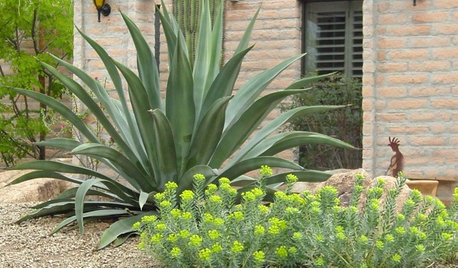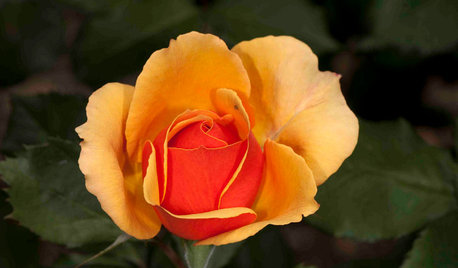Its a rainy day here in Eastern Ontario. That's OK, this has been an unusually wet and cooler than normal summer where I live. After the long cold winter and wet summer, I, with some surprise, find myself with the best rose garden I've had since moving to the East. My roses are healthy and pumping out blooms even in mid August. I am hoping that this is because I am finally learning to grow roses well and beginning to understand how to deal with some of the climate and disease issues that make a glorious rose garden a challenge for me. I'm very sure that being retired and having much more time to spend fussing over the garden is also a factor.
I just got back from the local nursery where I picked up an old Austin rose Fisherman's Friend for half price. This is another trial rose for me in my search for reds to die for. The fragrance and the flower form are excellent and HMF ratings rate the plant excellent except for disease resistance. The plant I got is pretty much defoliated from B.S. but otherwise vigorous and getting ready to put on new growth. So this brings me to the subject of my post.
Many of us obsess about disease resistance in roses. We all suggest roses that are highly disease resistant to each other, and indeed there are some disease resistant cultivars. However, all too often one person's super healthy cultivar turns out to be someone else's disease disaster.
I recall reading on this forum that there are at least fifteen strains of B. S. in North America and roses resistant to one strain will often succumb to another. Trying to grow only naturally disease resistant roses also limits our choices in the extreme.
Plants do not have an immune system per se. They are rather, genetically hard wired for resistance to specific pathogens, or not. They also have other defense response mechanisms that can come into play to some extent depending on the pathogens to which they are exposed. See the link for a good article on this topic.
Until this summer, I have pretty much picked roses for flower, fragrance and habit and disease resistance while important is not a deal breaker for me. So in most summers, I have Black Spot to a greater or lesser degree on many of my roses. Factors that effect its prevalence include weather, cultivation and if or how much I spray.
So why are my roses happier and healthier than ever before, even after a winter that did a lot of damage to some forum members gardens; and, a very wet summer, which usually equates with rose disease, especially Black Spot?
I suspect that the answer is dependent on four factors over which I have control:
1. I managed to winter my roses exceptionally well last year and they started off larger and more robust than has been normal.
2. A serious job with respect to mulching the beds. This included two inches of good organic compost, with a further two inches of hardwood chips over top, followed by another spray of dormant oil on plants and mulch.
3, I have done a much better job of plant and bed hygiene this year than normal. It began with a very thorough cleaning of plants and beds. I followed this up with a proper dormant spray regime before bud break. I have sprayed my roses about every 3 or 4 weeks this year with alternate applications of a weak solution of sulphur based fungicide and Funginex. The Province of Ontario probably has the strictest pesticide regulations in North America, they have outlawed most fungicides and insecticides licensed for use in the rest of Canada. So choices of fungicide are limited to a very few that the Provincial Department of Environment deem environmentally safe. So, never a great proponent of spraying, I am doing a little more than usual this year. I have also been picking any diseased leaves I see off of my plants, thus hopefully removing the source of spores that constitute the inoculum for infection.
4. Finally, a proper job of feeding. I have been feeding all of my rose plants every two weeks with a liquid fish fertilizer emulsion. I also spread shredded Alfalfa cubes and steer manure on the beds before I mulched them. The difference in bloom production, flower size and quicker flush cycles is very noticeable.
So, there you have it. After more than twenty five years of growing roses, I think I have finally graduated from a beginner to an intermediate rosarian.
End of report. Hope your gardens are doing as well as mine.
Cheers, Rick
Here is a link that might be useful: Do plants have an immune system?

















Vicissitudezz
nippstress - zone 5 Nebraska
Related Discussions
Will some roses develop resistance to black spot if not sprayed?
Q
Black spots on roses- cut all leaves? :(
Q
Cleanup important if roses have black spot
Q
Evaluation of Roses from the Earth-Kind� Trials: Black Spot (Di
Q
mzstitch